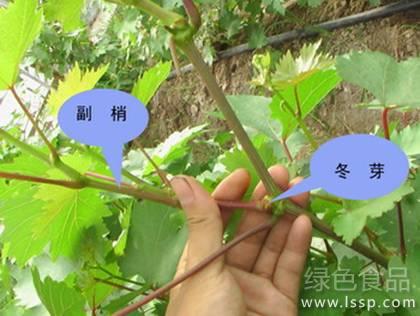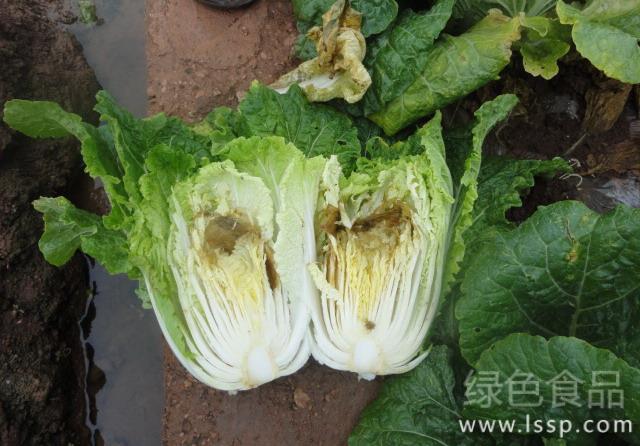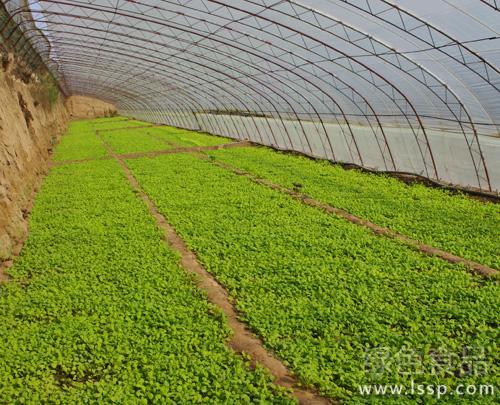A brief Summary of the Utilization and treatment Technology of Grape Auxiliary shoot

Grape accessory shoot
The buds of grape are precocious. With the extension of new shoots in a year, the summer buds in the axils of leaves can germinate several times, forming secondary shoots, tertiary shoots and so on. Therefore, the secondary shoot is an integral part of the grape plant. In production management, if the secondary shoots are handled properly, it can accelerate the growth and shaping of trees, make up for the deficiency of leaves on the main shoots, improve photosynthetic efficiency, and even produce secondary fruits and strips to raise seedlings; if not handled properly, it is easy to cause canopy closure in the shelf, poor ventilation and light penetration, serious diseases and insect pests, and reduced fruit quality. The utilization and treatment techniques of grape secondary shoots are briefly summarized as follows:
First, the use of auxiliary shoots
1. Rapid shaping of secondary shoots: ① when cultivating double main vines, if only one new shoot is produced in the same year, when the new shoot grows to 4-6 leaves, the new shoot will be picked out in time to promote the secondary shoot, and the auxiliary shoot will be selected and cultivated into the main vine according to the requirements of plastic surgery. When the main spreading shoot of ② is damaged, the secondary shoot at the top can be used as the extension shoot to make it continue to grow and be used as the main vine to culture and accelerate the formation. When ③ needs to cultivate backbone branches in some part of young or adult trees, it can pick the heart of new shoots ahead of time and promote secondary shoots to increase the number of branches.
2. Using the secondary shoots to cultivate the mother branches: for the seedless varieties with strong growth potential, such as you Seedless (Huangti) and Sentini Seedless (Qingti), and the trees that are more prosperous in the young tree stage, such as Red Earth (Hongti) and Rebier (Heidi), the main shoots and secondary shoots are very strong. Sometimes the winter buds of the main shoots are poorly differentiated and flattened, so it is extremely difficult to generate flower buds, while the secondary shoots next to the main buds tend to grow moderately, the buds are full, and are easy to differentiate into flower buds, which can be used as fruiting mother branches. The specific culture methods are as follows: in the middle and last ten days of June, the accessory shoots growing to 4-6 leaves were left 3-4 leaves for coring. After the secondary secondary shoots are formed, 2-3 leaves are left to pick the heart to promote the bud differentiation and maturation. For the third-grade accessory shoots, one leaf was left for continuous coring, and finally there were 10-15 mature leaves on the secondary shoots, which could satisfy the flower bud formation and differentiation on the accessory shoots.
3. Using secondary shoots to breed seedlings: in areas where the growing period is more than 180 days, when the length of secondary shoots reaches more than 15cm, the long new shoots at the base or together with the mother branches can be dug shallow trenches to press into the surface, and with the growth of secondary shoots, the soil can be gradually cultivated to promote rooting at the nodes of the main shoots and at the base of the secondary shoots, that is, to cultivate striped seedlings.
4. Secondary fruit is produced by secondary shoot: the varieties which are easy to form secondary fruit, such as Red Earth, Thomson Seedless, Rebel and so on, can re-pick the heart of the new shoot, promote the germination of winter buds and form secondary fruit. In the areas where the growing period is more than 200 days, the newly formed secondary fruit can also mature and the quality is better.
Second, the treatment technology of the secondary tip.
1. The secondary shoot treatment on the fruiting branch: the auxiliary shoot on the fruiting branch can be used to supplement the deficiency of the number of leaves (or leaf area) on the fruiting branch to produce photosynthate, and to shade the ear to prevent the ear from sunburn; secondly, secondary fruit can be produced on the secondary shoot (usually it is not used to bear secondary fruit, only when the fruiting branch or ear is damaged, the secondary fruit can be used to make up for the yield). In addition, coring must be carried out to prevent competition for water and nutrients with ears.
2. The treatment method of the auxiliary shoot on the fruiting branch is as follows: 4-5 leaves in the first secondary shoot, 3-4 leaves in the second secondary shoot, and 2-1 leaves in the third secondary shoot, that is, the coring mode is "(4-5)-(3-4)-(2-1)".
3. The treatment of auxiliary shoots on vegetative branches: the auxiliary shoots on vegetative branches have no use except for fruiting mother branches, secondary fruit and striping breeding seedlings. Therefore, it can be flexibly mastered when the number of branches and leaves on the shelf surface is small, it can be treated according to the auxiliary shoots on the fruiting branches, and if the number of branches and leaves is large, the "2-1" coring mode is adopted, that is, two leaves are left for the first auxiliary shoot and one leaf is left for the secondary secondary shoot.
4. The treatment of secondary shoots on extended shoots: on young and prosperous trees planted for 1-2 years, secondary shoots can be cultivated into fruiting mother branches. The specific measures are as follows: when the secondary shoot on the main vine of the young and prosperous tree grows to 5-6 leaves, 4-5 leaves will be left; for the secondary secondary shoot, 2-3 leaves will be left; for the third secondary shoot, one leaf will be left for coring. For the secondary shoots that appear later, one piece of continuous coring is left, that is, a "(4-5)-(2-3)-1-1" coring pattern is formed, which can promote the thickness of the secondary shoots of summer buds to reach more than 0.8cm, and flower buds can be formed on the secondary shoots of summer buds.
For the plants entering the fruiting stage, the summer bud auxiliary shoots are generally not used on the extended branches of the main vine, so there are as few auxiliary shoots as possible, so when coring, there are 5 leaves in the first secondary shoots, 3 leaves in the secondary secondary shoots and 1 leaf in the third secondary shoots, that is, the "5-3-1" coring pattern is formed. For the rest of the secondary shoot, there were 2 leaves in the primary secondary shoot, 1 leaf in the secondary secondary shoot, and 1 leaf in the second secondary shoot, which formed a "2-1-1" coring pattern. For the moderately growing varieties such as Red Earth and Autumn Black, the "last coring method" with one leaf left can be adopted, that is, one leaf is left on the first and second auxiliary tips to form a "1-1" coring method.
- Prev

How to prevent and cure the phenomenon of "dry heartburn" in Chinese cabbage
How to prevent and cure the phenomenon of "dry heartburn" in Chinese cabbage
- Next

Causes and improvement methods of soil deterioration in vegetable field
Causes and improvement methods of soil deterioration in vegetable field
Related
- Fuxing push coffee new agricultural production and marketing class: lack of small-scale processing plants
- Jujube rice field leisure farm deep ploughing Yilan for five years to create a space for organic food and play
- Nongyu Farm-A trial of organic papaya for brave women with advanced technology
- Four points for attention in the prevention and control of diseases and insect pests of edible fungi
- How to add nutrient solution to Edible Fungi
- Is there any good way to control edible fungus mites?
- Open Inoculation Technology of Edible Fungi
- Is there any clever way to use fertilizer for edible fungus in winter?
- What agents are used to kill the pathogens of edible fungi in the mushroom shed?
- Rapid drying of Edible Fungi

